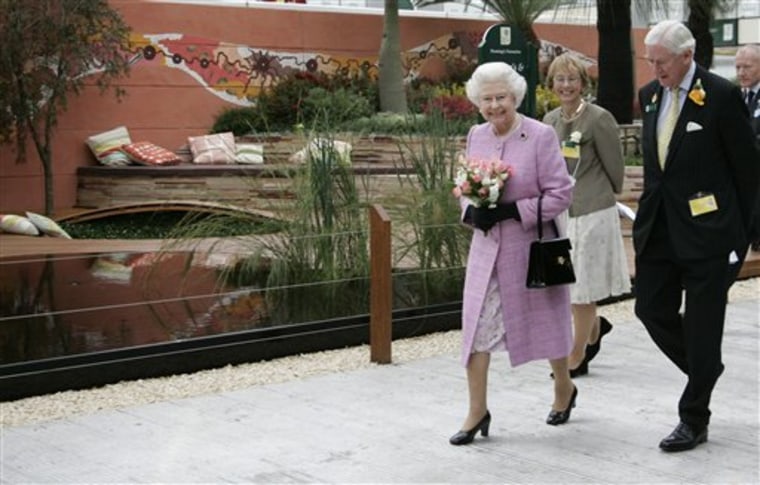Palm trees in a London park? Cactus in an English cottage garden?
Climate change was very much on gardeners' minds at this week's Chelsea Flower Show, the fashionable high point in the British gardening season.
Designers looked for inspiration from warmer, drier climes — southern France, Australia and Chile — for a future which is thought to augur wetter winters, more erratic rainfall and extended droughts.
"Opportunities and challenges — it's going to be both," said Andy Boorman, who directed a student display on adapting the beloved cottage garden to a changing climate.
Gardeners pondered the impact of average summer temperatures going up from 67.8 F to as much as 73.8 F in 2050, and winter averages rising from 36.7 F to 40.5 F.
The most striking image was the Cadogan Garden, conceived as a vision of a courtyard garden in a warmer London, and dominated by a dozen palm trees at least 26 feet high. It's not that designer Robert Myers expects a Saharan climate; these were Chusan palms, a hardy variety native to the Himalayas, mixed with pepper trees to create a shady canopy.
Drought-hardy specimens
A starker future was suggested by the U.K. Climate Impacts Program, which mounted a display featuring plants that evolved to cope with drought, notably river bottlebrush (Callistemon sieberi), a tough-looking flowering shrub that grows in dry watercourses in Australia, and echeveria, a flower-shaped succulent from Mexico and South America.
Purely suggestions, the designers said. Richard Lamb of the Climate Impacts Program said trial and error is the likely way ahead.
"The way gardeners work is that if something doesn't do well, you try something else," he said.
Climate change threatens horse chestnut and native bird cherry trees, and cottage garden favorites delphiniums and lupins, but it will please many Britons by also making parts of the country inhospitable to the fast-growing Leylandi, the cause of many neighborly disputes over very tall hedges.
The Tyndall Centre for Climate Change Research, based in relatively arid eastern England, presented a garden triptych illustrating how gardens may evolve from the traditional garden of the 1950s blooming with delphiniums, foxgloves, lupins, rhododendrons and azaleas.
Alternative gardens
Tyndall's "low emissions" garden, which assumes moderate temperature rises, used plants now grown in sheltered positions, but which would be expected to thrive in a warm climate: Mediterranean cypress, mimosa, loquat, and the dwarf fan palm, the only palm native to Europe.
The "high emissions" garden, which also factors in the expectation of higher winds and greater variation in rainfall, uses plants which now are taken into a conservatory for protection into the winter: Italian cypress, bougainvillea, leadwort, parrot claw, and hardier cacti and succulents such as aeonium arboretum and aloe.
It doesn't have to be that way, contend the students at Writtle College in Essex, the driest county in Britain.
"We've focused on plants and flowers that people actually want in their gardens, not things like cacti and gravel," said team member Andrew Birkett. "People like cottage gardens now and they will in the future."
Daisies, heliotrope, dahlias, common field poppies, salvia and verbena all found place in a garden designed to thrive on Essex's average annual rainfall of 24 inches — on a par with Jerusalem.
"The secret in a dry county like Essex is to harvest rainwater," said Boorman, who advised the students.
